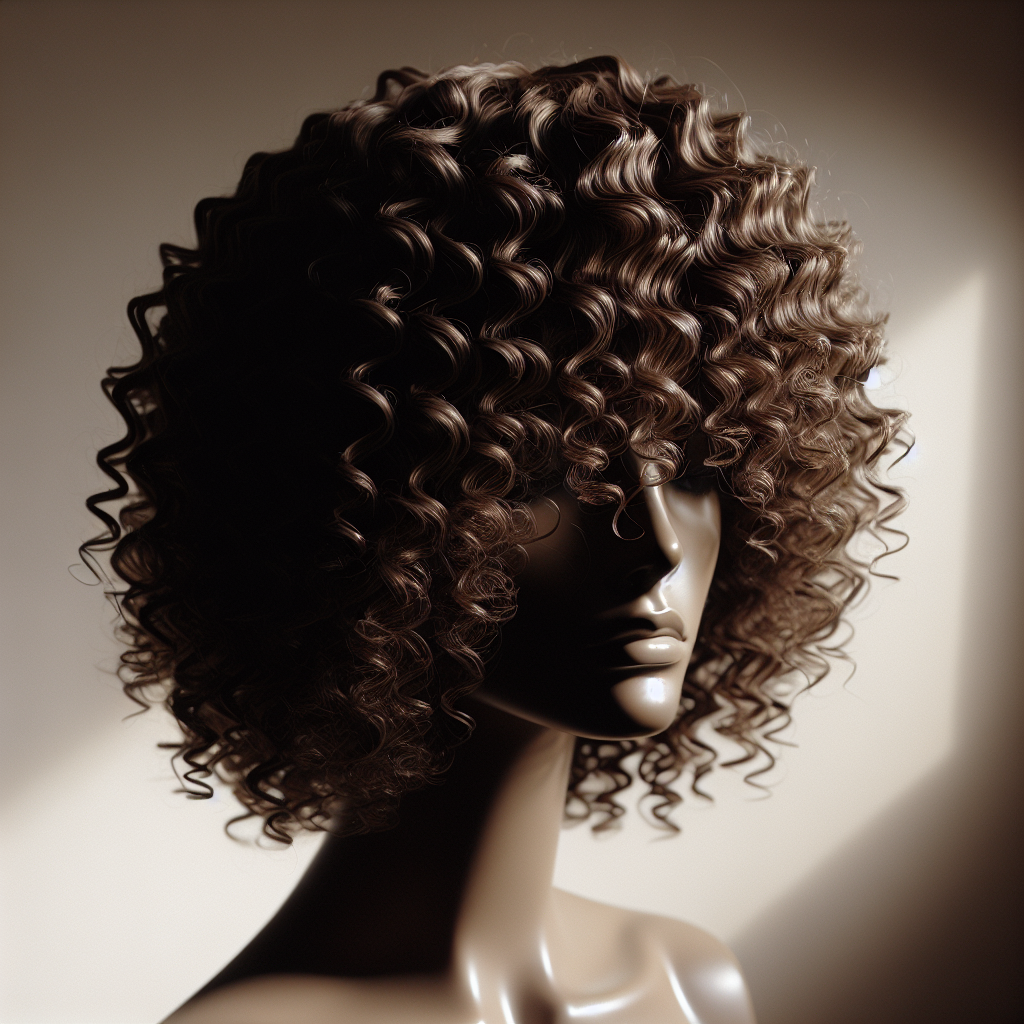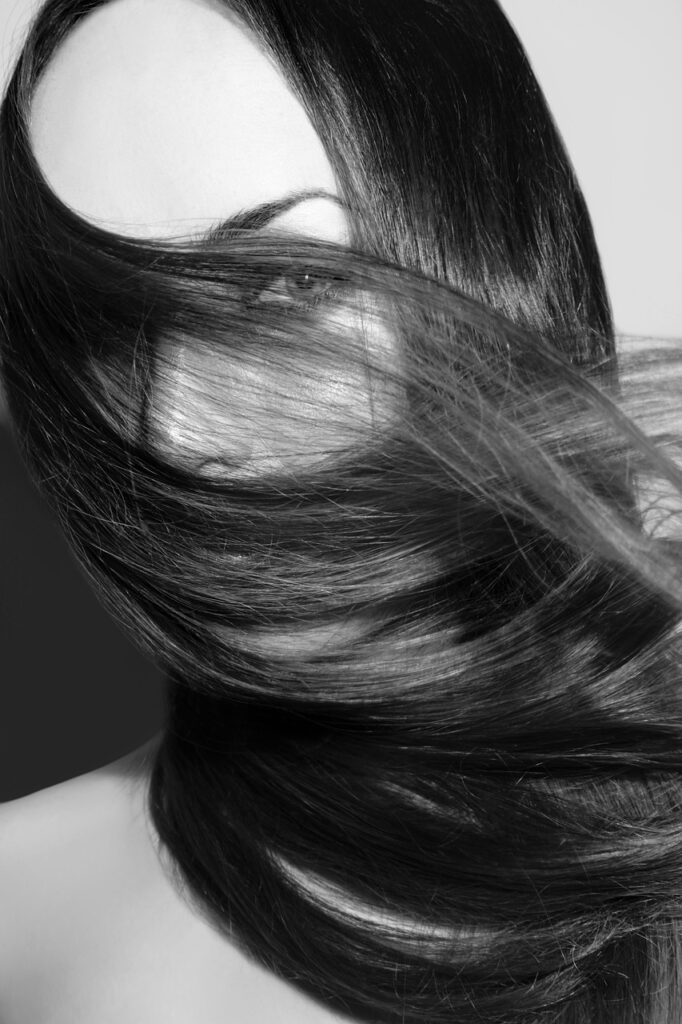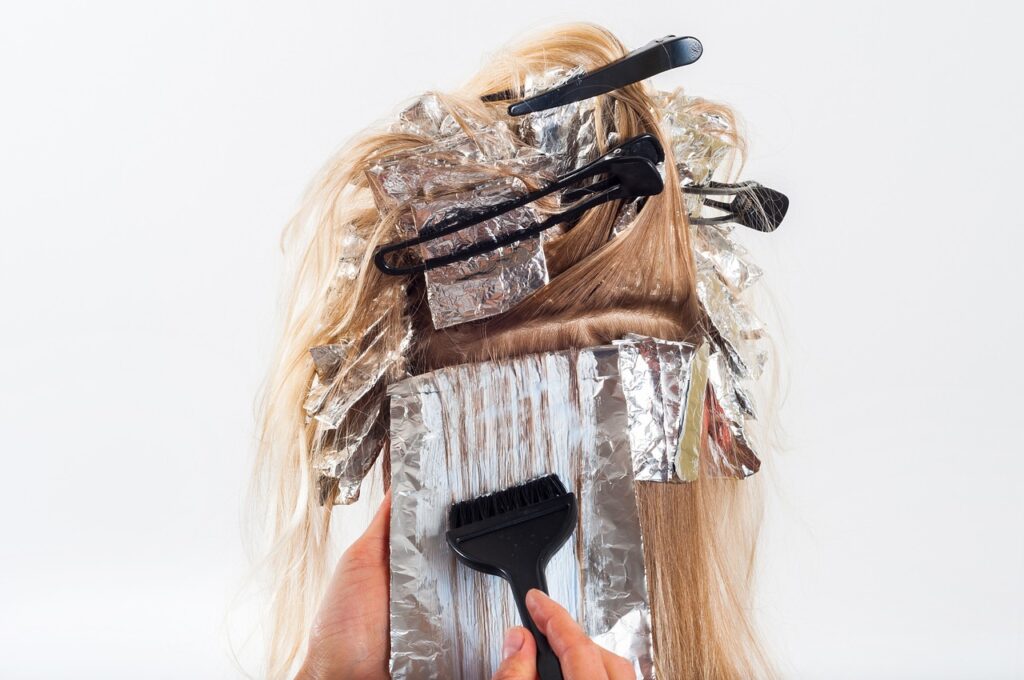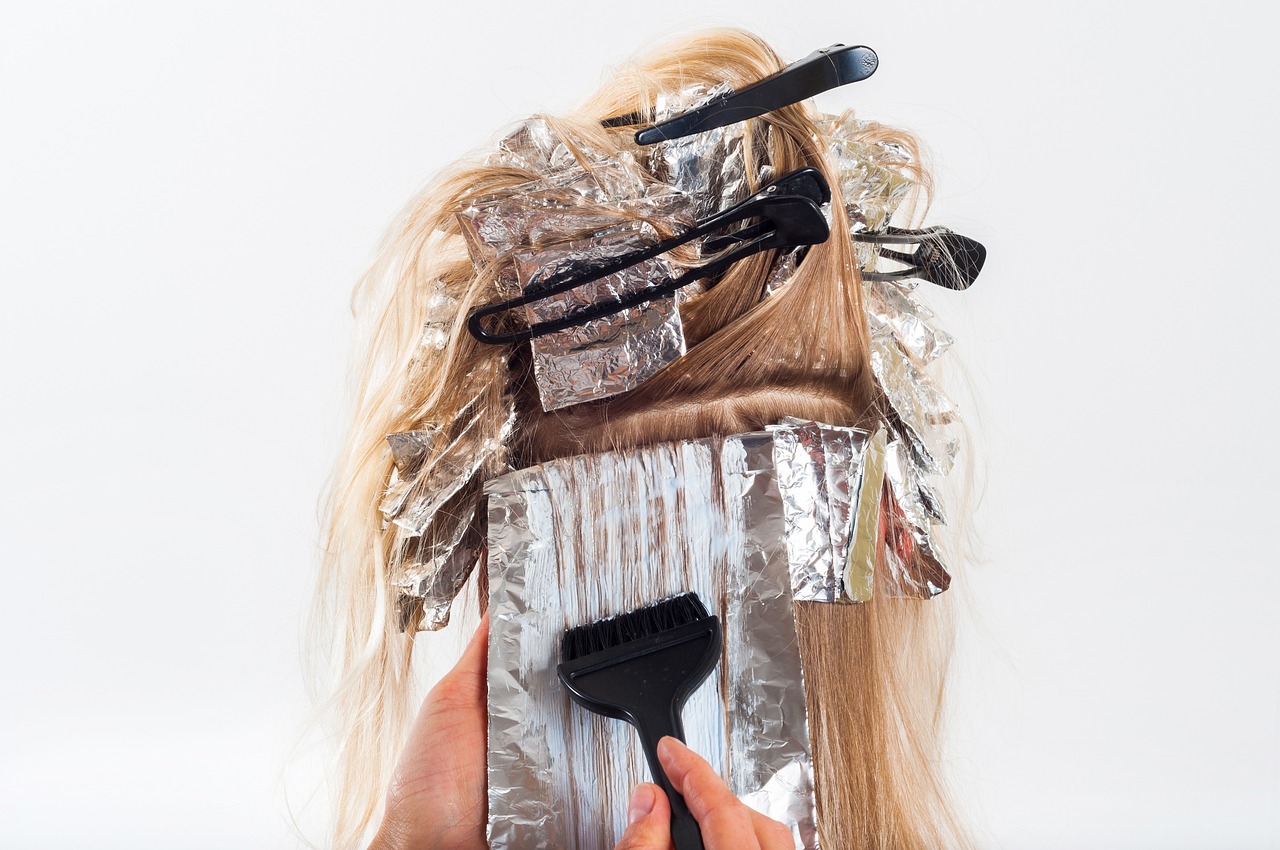Using a comb on a curly human hair wig may seem like a daunting task, but fear not! With these helpful tips, you’ll be able to confidently and gently detangle those gorgeous curls without causing any damage. From choosing the right comb to knowing the proper technique, we’ve got you covered. So, say goodbye to knots and hello to beautifully styled curls with these essential tips for using a comb on a curly human hair wig.
Choosing the Right Comb
When it comes to choosing the right comb for your curly human hair wig, there are a few factors to consider. The bristle type, spacing of the teeth, and the size of the comb all play a significant role in ensuring that you are using the appropriate tool for detangling and styling your wig.
Bristle Type
The bristle type of the comb is crucial when it comes to caring for your curly wig. It is recommended to opt for a comb with wide, rounded teeth instead of a brush with bristles. This is because brushes with bristles can easily snag on the curls, causing breakage and damage to the wig. A wide-toothed comb allows for gentle detangling without disrupting the natural curl pattern.
Spacing of the Teeth
The spacing of the comb teeth is another important factor to consider. When dealing with curly hair, it is best to use a comb with wider spacing between the teeth. This will prevent the hair from getting tangled and help the comb to glide through the curls effortlessly. Using a fine-toothed comb with close spacing can lead to unnecessary pulling and breakage.
Size of the Comb
Choosing the right size of the comb is also essential for effectively managing your curly wig. Depending on the length and volume of the wig, you may opt for a smaller or larger comb. A smaller comb can be more convenient for touch-ups and styling purposes, while a larger comb can cover more surface area and detangle larger sections of hair at once.
Preparing the Wig
Before you start detangling and styling your curly human hair wig, there are a few steps to follow in order to properly prepare the hair. This will make the detangling process easier and minimize the risk of damage to the wig.

Identifying the Hair Type
First, it is important to identify the hair type of your wig. This will help you determine the appropriate products and techniques to use. Curly hair can vary in texture, ranging from loose curls to tight coils. Understanding the specific curl pattern of your wig will guide your approach to caring for and styling it.
Spray Detangler
Using a spray detangler is highly recommended when preparing your wig for styling. A spray detangler helps to soften the hair, making it more manageable and easier to comb through. It also provides an additional layer of protection against breakage and damage. Simply spritz the detangler onto the hair, focusing on the ends and any particularly tangled areas.
Sectioning the Hair
To avoid overwhelming yourself and potentially causing more tangles, it is best to section the hair before detangling or styling the wig. Divide the hair into manageable sections using clips or hair ties. This allows you to focus on one section at a time, ensuring that you thoroughly detangle and style each section before moving on to the next.
Detangling Techniques
Detangling curly human hair wigs requires a gentle and careful approach to avoid breakage and maintain the integrity of the curls. Here are some techniques to follow when detangling your wig.

Start at the Ends
When detangling, always start at the ends of the hair and work your way up. This prevents pulling and further tangling of the hair. Begin by gently combing through the ends with your fingers, removing any knots or tangles. Once the ends are detangled, gradually move up to the roots, using a wide-toothed comb to further smooth out the hair.
Work Your Way Up
As mentioned earlier, it is important to work your way up from the ends when detangling. Comb through each section of the hair slowly and carefully, ensuring that you detangle the entire length of the hair. This approach minimizes breakage and prevents additional knots from forming as you move up.
Use Gentle Strokes
When combing or finger-combing your wig, use gentle strokes. Avoid using excessive force or pulling on the hair. Instead, use smooth, controlled movements to glide through the curls. This reduces the risk of breakage and maintains the natural curl pattern of the wig.
Wet vs Dry Hair
Detangling curly wigs can be done on both wet and dry hair. Each method has its advantages and considerations, so it’s important to understand the differences.

Detangling Wet Hair
Detangling wet hair can be helpful as the water adds moisture to the hair, making it more pliable and easier to comb through. Apply a leave-in conditioner or a water-based detangling spray to dampen the hair before detangling. Start by gently finger-combing the hair to remove any knots or tangles, then follow up with a wide-toothed comb to further detangle the curls.
Detangling Dry Hair
Detangling dry hair can be suitable for those who prefer to detangle and style their curly wig when it is fully dry. However, it’s important to note that dry hair is more prone to breakage, so extra care must be taken. Start by applying a lightweight leave-in conditioner or a detangling product specifically designed for dry hair. Gently finger-comb the hair to loosen any knots or tangles, then use a wide-toothed comb to detangle the curls.
Avoiding Breakage
Breakage can be a common concern when working with curly human hair wigs. Here are some tips to help you avoid breakage and keep your wig looking its best.
Be Patient
One of the key aspects of avoiding breakage is being patient. Rushing through the detangling process can lead to excessive pulling and breakage. Take your time, work through each section methodically, and be gentle with the hair. Patience is key to maintaining the integrity of the curls and preventing unnecessary damage.

Avoid Excessive Force
Using excessive force when detangling or styling your wig can cause breakage and damage. Remember to be gentle with the hair, especially when encountering knots or tangles. Instead of pulling or tugging, use a gentle motion to work through the knots or consider applying a detangling product to help loosen the tangles.
Use Heat Protectant
If you plan to use heat styling tools on your wig, it is crucial to use a heat protectant spray beforehand. Heat protectant sprays create a barrier between the hair and the heat, reducing the risk of heat damage and breakage. Apply the heat protectant evenly throughout the hair, paying extra attention to the ends, which are more vulnerable to damage.
Styling Tips
Styling a curly human hair wig can be a fun and creative process. Here are some tips to help you achieve different styles and enhance the natural beauty of your wig.
Finger-Combing
Finger-combing is an excellent technique for adding volume and definition to your wig’s curls. After detangling, use your fingers to comb through the hair, gently separating the curls and enhancing their natural shape. This technique can also help to minimize frizz and create a more natural-looking hairstyle.

Twisting Curls
To achieve more defined curls, consider twisting sections of the hair. After detangling, separate a small section of hair and twist it gently from root to tip. Repeat this process throughout the wig, focusing on sections that may need more definition or structure. Once the hair is twisted, you can either leave the twists in for a while or carefully unravel them for beautiful, defined curls.
Defining Curls
If you want to enhance the natural curl pattern of your wig, there are several methods you can try. One popular technique is the “plopping” method, where you use a T-shirt or a microfiber towel to wrap the hair, encouraging the curls to form and set in place. Another option is to apply a curl defining product, such as a curl cream or gel, scrunching it into the hair to bring out the curls’ definition.
Maintenance and Care
Proper maintenance and care are crucial for preserving the longevity and quality of your curly human hair wig. Here are some essential steps to follow to ensure your wig remains in excellent condition.
Regular Cleaning
Regular cleaning is essential to remove any buildup of products, dirt, or oils that may accumulate on the wig. It is recommended to wash the wig every 7-10 wears or as needed. Use a mild, sulfate-free shampoo and a moisturizing conditioner specifically designed for curly hair. Gently cleanse the hair, focusing on the scalp and roots, and avoid rubbing or tangling the curls excessively.
Avoiding Heat Damage
Heat damage can cause irreversible harm to your wig’s curls. Whenever possible, opt for heat-free styling methods or use low heat settings on styling tools. It’s also important to always apply a heat protectant spray before using any heat styling tools to minimize the risk of damage. Remember, low and slow is key when it comes to heat styling curly wigs.
Using Leave-In Conditioner
Curly human hair wigs thrive on moisture, so using a leave-in conditioner is highly recommended. A leave-in conditioner helps to nourish and hydrate the hair, keeping the curls soft, defined, and frizz-free. Apply a small amount of leave-in conditioner evenly throughout the hair, focusing on the ends where dryness tends to be more prominent.
Storing the Wig
Proper storage is essential for maintaining the shape and appearance of your curly human hair wig. Here are some tips on how to store your wig effectively.
Using a Wig Stand
Investing in a wig stand is a wise choice when it comes to storing your wig. A wig stand helps to maintain the wig’s shape and prevent tangling. When not in use, simply place the wig on the stand, ensuring that the curls hang freely and are not compressed or flattened. This will keep the curls looking their best and minimize the need for excessive styling or touch-ups.
Covering the Wig
To protect your wig from dust, dirt, and other environmental factors, it is advisable to cover it when not in use. You can use a wig cap or a breathable fabric cover to shield the wig. Be sure to choose a cover that allows the hair to breathe and prevent moisture from building up, as this can lead to mold or mildew.
Avoiding Tangling
When storing your wig, ensure that the curls are not tangled or compressed. If you’re using a wig stand, allow the curls to hang freely, ensuring they’re not overlapping or intertwined. Taking these precautions will prevent unnecessary stress on the hair and reduce the risk of tangling or matting.
Professional Maintenance
While taking care of your curly human hair wig at home is essential, professional maintenance can help keep your wig in optimal condition. Here are some professional services you may want to consider.
Salon Visits
Visiting a reputable salon that specializes in wig care can provide a professional touch to maintain your wig’s quality. Professional stylists can offer services such as steam treatments, which can rejuvenate and revitalize the hair, ensuring it remains soft, silky, and manageable.
Deep Conditioning
Deep conditioning treatments can be beneficial for curly wigs, as they provide intense hydration and nourishment to the hair. These treatments help to restore moisture, repair damage, and enhance the overall health and appearance of the wig’s curls. Consider scheduling regular deep conditioning sessions with a professional stylist to keep your wig in top shape.
Trimming the Ends
Regular trims can help prevent split ends and keep your wig looking fresh. Over time, the ends of the wig may become dry and brittle, leading to breakage. Booking regular trimming appointments with a professional stylist ensures that any damaged or split ends are removed, allowing the wig to maintain its natural bounce and vitality.
Dealing With Shedding
Shedding can be a concern for many wig wearers, especially with curly human hair wigs. Here are some tips for dealing with shedding and minimizing its occurrence.
Identifying the Cause
First, it is important to identify the cause of shedding in your wig. Shedding can be a natural occurrence as the hair goes through its growth and shedding cycles. However, excessive shedding may indicate issues with the wig’s construction, such as faulty wefts or poor quality hair. If you notice excessive shedding, it may be wise to consult a professional stylist or the wig manufacturer for further assistance.
Preventing Shedding
While shedding is a natural process, there are steps you can take to minimize its occurrence. Avoid excessive manipulation or tugging on the hair, as this can lead to increased shedding. Additionally, be mindful of the products you use on your wig. Harsh chemicals or overly drying products can weaken the hair and contribute to shedding. Opt for high-quality, gentle hair care products that are specifically formulated for curly hair.
By following these comprehensive tips and techniques, you can confidently use a comb on your curly human hair wig. With the right comb, detangling techniques, and a gentle touch, you can maintain the beauty and integrity of your wig’s curls, ensuring that it always looks its best. Keep in mind the importance of proper maintenance, regular cleaning, and professional care to keep your wig in exceptional condition for years to come.
